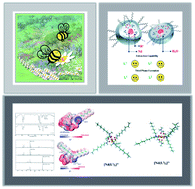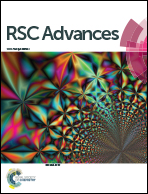A comparative study on the coordination of diglycolamide isomers with Nd(iii): extraction, third phase formation, structure, and computational studies†
Abstract
A novel asymmetric diglycolamide N,N-dimethyl-N′,N′-dioctyl diglycolamide (LII) was synthesized. The Nd(III) extraction behavior from HNO3 and loading capability of the solution of LII in 40/60 (v/v)% n-octanol/kerosene were studied. Analyses by the slope method, ESI-MS, and FT-IR indicated that, similar to the previously studied isomer ligand N,N′-dimethyl-N,N′-dioctyl diglycolamide (LI), 1 : 3 Nd(III)/LII complexes formed. Under the same experimental conditions, the distribution ratio and limiting organic concentration of LII towards Nd(III) were smaller than those of LI, but the critical aqueous concentration of LII was larger, which implies that LII exhibited poorer extraction and loading capabilities towards Nd(III) than LI, and LII has a tendency to be less likely to form the third phase. The quasi-relativistic density functional theory (DFT) calculation was performed to provide some explanations for the differences in their extraction behaviors. The electrostatic potential of the ligands indicated that the electron-donating ability of the amide O atoms in LII displayed certain differences compared with LI. This inhomogeneity in LII affected the interaction between LII and Nd(III), as supported by QTAIM and bonding nature analysis, and it seemed to reflect in the extraction performance towards Nd(III).

- This article is part of the themed collection: Shining a Light on the f-Block


 Please wait while we load your content...
Please wait while we load your content...